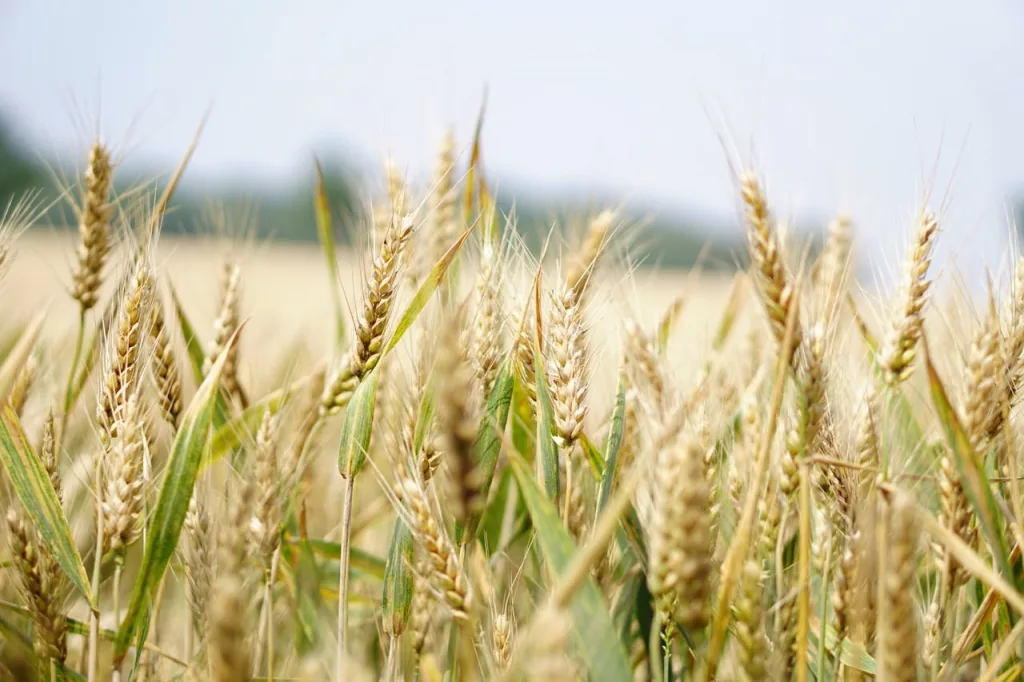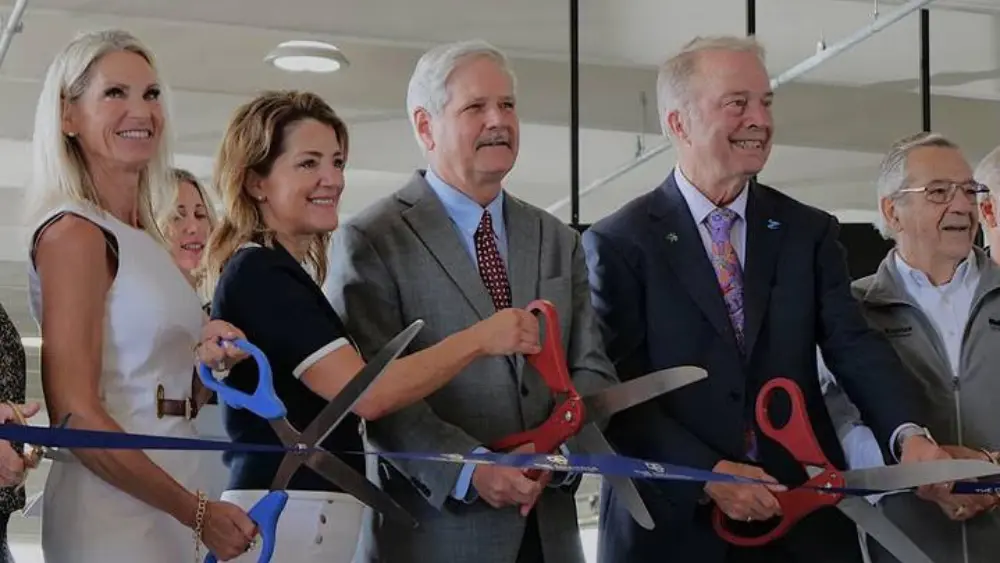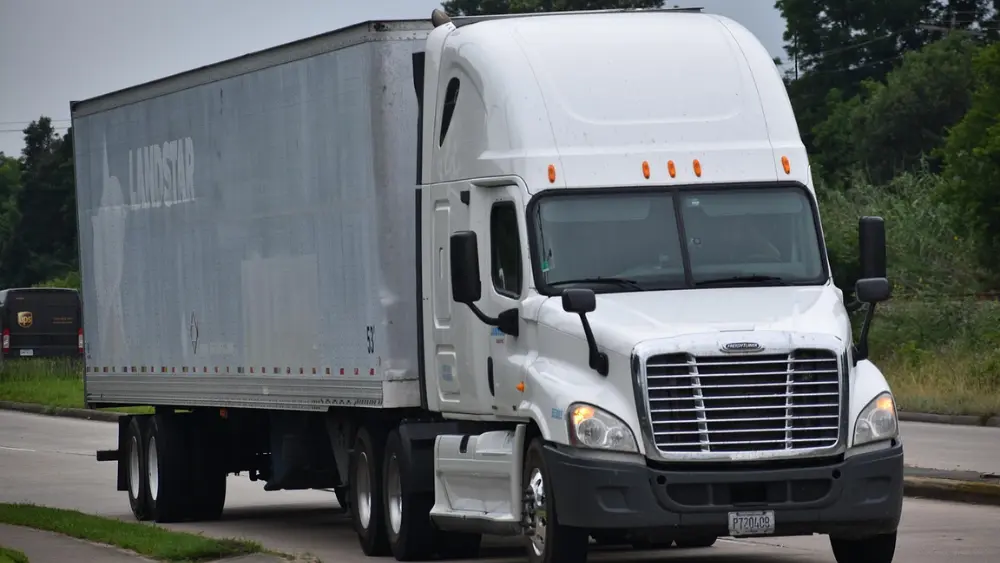By Steve Hallstrom
North Dakota Agriculture Commissioner Doug Goehring says the region’s farmers and ranchers deserve significant credit for navigating this spring’s unpredictable weather, fluctuating cattle numbers, and economic pressures.
In an exclusive interview with the Farmer, Goehring shared his cautious optimism, tempered by the realities of farming in a challenging environment.
Drought Conditions and Crop Progress
North Dakota’s growing season has been a mixed bag in 2025, with drought conditions easing in some areas but persisting in others.
“Things have changed significantly. Although in Western North Dakota, some recent conversations—they said, ‘Yeah, we got four inches, and it sure helped, but it disappeared.’ We can use a little bit more, and they said, ‘Well, you never know what’s around the corner.’ You know, they didn’t want another four inches, but they’d sure like something to just kind of keep priming the pump and keep it going.”
Goehring added that central North Dakota faced severe flooding, with some areas, including his own farm, receiving over seven inches of rain, causing fields to overflow and roads to flood—an unprecedented event for many.
The variability in soil types and slopes has influenced how these rains impacted planting, with some farmers nearly finished with others having caught up during drier spells.
According to the U.S. Drought Monitor, as of June 10, North Dakota’s drought conditions are varied. Approximately 20% of the state is under moderate drought (D1), primarily in western regions, while 10% faces severe drought (D2).
However, recent precipitation has improved soil moisture in central and eastern areas, with 60% of the state classified as abnormally dry (D0) or better, a significant improvement from earlier in the year. These conditions have allowed most farmers to complete planting, though grazing lands in the west still need consistent moisture to fully recover.
Cattle Numbers: A Slow Rebound
The cattle industry, a foundational piece of North Dakota’s ag economy, has faced significant challenges due to past droughts, particularly in 2021, which forced many ranchers to sell off herds due to lack of grazing forage.
Goehring says it’s been a slow recovery.
“They’ve been rebuilding a little bit. You’re seeing more of these producers keeping some of their heifers back instead of selling them, and what helps for them to do that is the fact that prices are up. When prices are up on livestock, that gives you the ability to meet your overall budget, service your debt, and you can hold back a few of those heifers.”
According to the USDA’s 2024 Cattle Inventory Report, North Dakota’s headcount has been in a downward trend over the last 7 years.
In 2015, the state had 1.85 million head of cattle and calves, peaking at 1.95 million in 2018 before dropping to 1.78 million in 2022 due to drought-induced sell-offs.
By early 2024, the number had rebounded slightly to 1.83 million.
Nationally, U.S. cattle numbers followed a similar trend, declining from 89.8 million in 2015 to a low of 87.2 million in 2023, with a slight increase to 87.5 million in 2024 as producers retained more heifers.
This slow recovery is driven by high beef prices, which incentivize herd expansion despite high input costs.
Goehring also pointed to state support programs like the Rebuilders Program, which aids ranchers recovering from drought.
“One of the programs we have at the state level, we call the Rebuilders Program, and that gives livestock producers that suffered through that drought and some of those conditions and situations to come back a few years later when things may look a little bit
better. Then they can come back, and we have a program set up to help them get enough funds pulled together and buy those livestock.”
Supporting Young Farmers Through the Bank of North Dakota
With input costs rising and commodity prices remaining relatively low, young farmers face significant barriers to entry.
Goehring was asked if there is more that the Bank of North Dakota (BND) can do in supporting these producers.
“We actually have some programs in place. We have beginning farmer loans, and we’ve raised the levels and the limits on them. We’ve also looked at operating. There are some things that can be done. The first part is your local lender has to be willing to go there because the Bank of North Dakota doesn’t deal or lend directly to individuals unless the local lender is capped out. They have to manage risk, and if it just doesn’t make sense and the lead lender isn’t willing to get into it, we really can’t just subsidize
them.”
The BND, the only state-owned bank in the U.S., reported $10.2 billion in assets as of December 31, 2024, according to the Bank of North Dakota’s 2024 Annual Report.
Goehring says these BND programs are crucial at a time when economic headwinds are strong.
“Back in the 1970s, a family of four could live off several thousand dollars, and by the time we got to the 90s, you were already looking at family living in the $36,000 to $40,000 area. Now you’re talking about family living closer to $90,000. Well, nothing has changed with respect to price on the farm, and now you’re having to squeeze more and more out of every acre or every pound of beef.”
He adds that the economic challenges have driven farm consolidation, as producers must scale up to meet rising costs.
“The margins are still the same, so then they’re having to produce more, farm more, have more cows. That’s the biggest challenge—family living has been the biggest problem in our whole economy when it comes to farming because it’s forced us to actually have to get bigger.”
Biosecurity Concerns: The Fusarium Incident
A recent incident, involving Chinese students attempting to smuggle a Fusarium fungus into the U.S., has raised a massive red flag about potential biosecurity risks.
Goehring downplayed the immediate threat, slightly, noting the pathogen’s prevalence.
“Fusarium, that particular fungus that they smuggled in, is already prevalent in the United States, and very prevalent in North Dakota. In fact, if people remember scab back in the 90s, we’ve done our best to try and have breeding programs and research programs that help address that. There’s extensive testing before anything goes into the food system. You’ll notice on the bad years where our wheat farmers are struggling, and they’re getting hit with discounts because of scab or vomitoxin, they’re frustrated because they have to go through a more extensive clean-out.”
He expressed confusion about the incident’s intent, given Fusarium’s widespread presence.
“It’s already very prevalent in North America. It’s all over in the soil. The fungus spores are already there. We’re all waiting to see as they’re going through and testing this—has there been something that’s been altered about this particular one that these guys have, or were they just idiots and brought it in and didn’t know any better? What were they thinking?”





